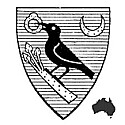









 [click for full size versions]
[click for full size versions]
It would be difficult to overstate the importance of the many contributions made by medical doctor Marcello Malpighi (1628-1694) to science. As the images here suggest, his main works derive from his pioneering use of the microscope.
He established histology (study of tissues) as a field of medicine and there are microanatomical structures in the kidney, spleen and skin (and likely more) that still bear his name. He also founded the science of comparative physiology by documenting his findings from examination of liver tissue from a number of organisms.
He was the first to identify and describe capillaries - the connecting vessels between arteries and veins - thus completing the study of blood circulation that William Harvey had published in the year of Malpighi's birth. His microscopic work with eggs enabled him to describe the development of a chicken embryo: this was itself groundbreaking research.
He didn't restrict his work to human or mammalian microscopy either. He was the first to recognize that insects had breathing tubes and lacked lungs. He contributed a large body of work on plant anatomy too, as many of the above images will testify (it's sometimes hard working out which is animal, insect or plant isn't it?).
He was a life long friend of mathematician Giovanni di Borelli and was something of a collaborator with the Dutch microscopist, Jan Swammerdam. Later in life Malpighi became the Papal physician in Rome and held yet another Professorial Chair of Medicine following his previous appointments in Pisa, Bologna and Messina.
Like all great thinkers, Malpighi's ideas did not go unchallenged. His own student defended a number of theses in 1689 which derided the microscopic work of his mentor:
"It is our firm opinion that the anatomy of the exceedingly small, internal conformation of the viscera, which has been extolled in these very times, is of use to no physician."Most of Malpighi's formal papers were published in the Journal of the Royal Society of England which made him their first Italian fellow. The collected works of Malpighi were first published as Opera Omnia, his botanico-medico-anatomicus in 1687. I nabbed these images above last week from 2 volumes and don't recall if all of the 700-odd pages were published at the same time.
- Opera Omnia is on display in its entirety at Wolfenbüttel's Herzog August Bibliothek - Volume I; Volume II (thumbnail pages). There are many more illustrations not shown here.
- Malpighi at New Advent, wikipedia and (allegedly) Encyclopedia Britannica.
- Short piece at Southern Illinois University.
- Just out of interest, there are 64 recent citations for 'Marcello Malpighi' in MedLine - some of the abstracts are worth reading and lucky you if you have unrestricted access.



















1 comment :
nice! are there antiquarian books like that that talk about venereal diseases or congenital malformations?
Post a Comment
Comments are all moderated so don't waste your time spamming: they will never show up.
If you include ANY links that aren't pertinent to the blog post or discussion they will be deleted and a rash will break out in your underwear.
Also: please play the ball and not the person.
Note: only a member of this blog may post a comment.